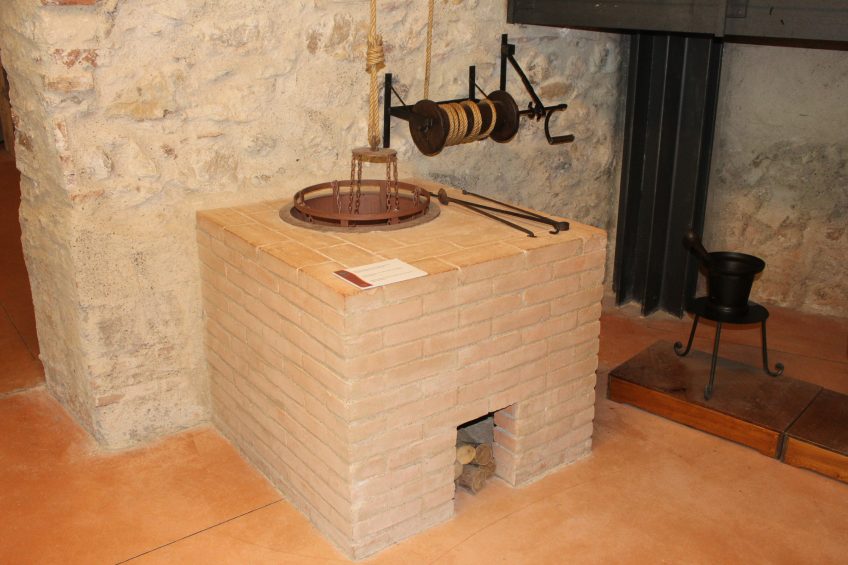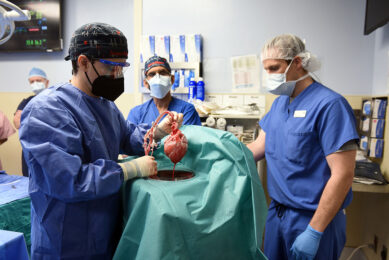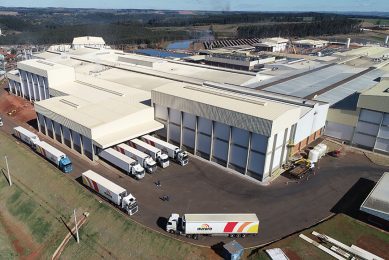Pigs in medieval Italy – a tale of recycling

Recycling of production materials may sound like something of the current age and time, but in fact societies have done nothing but recycling for centuries. Pig Progress editor Vincent ter Beek found a nice example of re-use of pigs in an age long gone.
About 2 years ago, I combined my passion and my profession in an interesting contribution on pigs in medieval Italy. Being a historian working in a pig environment I discovered tiny statues of pigs in the cloisters of a medieval church. It led me to dive into the question what was it like, pig production in that time?
Pigs and history coincide once more
This year again Italy was on the menu – and it may not come as a surprise that once more ‘pigs’ and ‘history’ coincided during my travels. It happened at the shores of Lake Garda in northern Italy, where in the late Middle Ages, the twin towns Toscolano and Maderno rose to fame due to their ideal circumstances for quality paper production.
Doesn’t sound like pigs, I know, but do read on.
Close to a once forceful river, the strong current provided everything a proper paper mill needed – so over the years the towns between them had as many as 150 (!). I had never realised that paper making in itself also was a true art – but sure it was. In fact, proper paper was one of the preconditions for the revival of ideas and arts known as the Renaissance around the 1500s. After all, new ideas not only needed to be printed, they also needed to printed onto something!
Paper production in 1381
A museum devoted to paper production pointed out that paper was made in the town as early as 1381 and probably even earlier. Paper making was an art that got well-established in Italy by the end of the 13th century and 1 century prior to that in Spain. It had reached Europe through knowledge of the Moors who in turn eventually got the knowledge via India from ancient China.
Animal glue playing an important role
Now where do livestock come in? When studying the practice of paper making, I learnt that ‘animal glue’ played an important part in the process. Paper was made from rags in those times, which were completely reduced to a pulp, after which the substance was dried. Should ink be applied on the dried produce in that phase, it would create stains instead of letters. That is why an additional protective layer was necessary for the paper in order for it to be used in practice. Animal glue was found to be an excellent solution for that.
Animal glue was nothing new, as the concept was centuries old as well. The ancient Egyptians used it and so did the Romans. It comes down to boiling animal leftovers in large kilns until nothing more is left than a slimy substance, which works well to keep wooden pieces together for instance.
Bones, hides or other left-overs
Animal glue was often made of animal connective tissue, think of bones, hides or other left-overs. Often, remains of horses were used for it, as well as rabbits and fish. In Toscolano-Maderno, there was a close connection with tanneries, which surely had plenty of animal left-overs as well. (By the way, don’t read about the history of tanning – it might make you nauseous).
As it happened with a lot of knowledge from the Greek and Roman era, much of that evaporated during the Middle Ages. Wood crafting is said to have remained one of the few trades continuing to use animal glue all those years. As from the mid-14th century, with the growing number of paper mills, the application of animal glue for paper making grew as well.
Pigs and animal glue
Observing a reconstruction of a historical kiln for animal glue production purposes in a paper mill, my interest grew and I heard myself ask about the re-use of pig remains for producing animal glue. “Oh yes,” the lady behind the counter answered firmly in Italian. “They used anything they could lay their hands on.”
So we already know how pigs were held during their lives in late medieval Italy – but now we also know what may have happened with their left-overs after slaughter…
They played their own little role in sparking the Renaissance!











